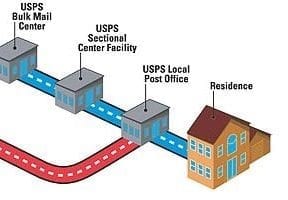Successful online retail businesses focus on delivering good value and good customer service. These stores want to help customers. But not everyone who comes to your site to shop is a good customer, and not every customer service problem is your fault.
Good retail customers can have valid problems. These good customers deserve to be taken care of. Customers who had problems that your store addressed could be some of your most loyal shoppers.
Bad ecommerce customers, however, are a drain on your store, your profit, and your success. Ecommerce entrepreneurs may not be able to please every customer and every shopper. Sometimes it can be good business to fire bad a customer.
What follows are five signs you might be dealing with a bad customer.
Unreasonable Expectations
Online retailers are obligated to set proper customer expectations. For example, during the Christmas shopping season, online shops should be forthcoming about holiday shipping deadlines so that customers know that a package will arrive before Dec. 25.
If your store did not properly communicate, take care of the effected customer. In fact, it is always a good idea to verify that you have provided clear communications and to consider your customer’s point of view.
Some bad ecommerce customers, however, will have unreasonable expectations even when your business has done everything right, and there is almost nothing you can do to please them.
They will want the moon, and they will believe you owe it to them.
Questionable Integrity
Some bad customers are out to get you or at least to get something for nothing. They may try to cheat your business.
In a previous article, I described a customer who took advantage of a retailer’s liberal return policy. In cases when paying for return shipping would cost more than replacing the actual product being returned, this retailer would often tell customers to simply keep the products and still refund the money. Most customers were happy and appreciative. But at least one customer made it her monthly habit to order inexpensive items and then initiate a return in order to get those items for free. That is an example of questionable integrity.
Threatens Your Business
Some bad customers will opt for the nuclear option from your very first email message or phone call. Their threat may be to report your business to a consumer group. They may also threaten to sue you.
A couple of years ago attorney Ruth Lee Johnson wrote a short article for Psychology Today magazine about people threatening a lawsuit. Her article was not specifically aimed at online retailers or even at businesses, but she does a good job of placing threats in perspective.
“For some people, the knee-jerk reaction to conflict is to threaten a lawsuit,” Johnson wrote. “These people will threaten to sue you for trespass if the vines in your backyard grow over their precious property line by an inch. They will threaten to sue you for intentional infliction of emotional distress if you dare criticize them in any way. They will threaten to sue you for assault and battery if you trip and inadvertently brush against them. They will sue you for discrimination and harassment if you try to argue with them. This is not to make light of litigants with actual meritorious claims of trespass or emotional distress or anything else; but threats of lawsuits have become increasingly common.”
The first bit of advice for when a bad customer threatens is not to let if affect you. This sort of threat can be emotionally draining. Second, it may be a good idea to stop communicating. Simply say something like, “I need to consult an attorney before I continue with this conversation.”
Abusive Language
No customer has the right to abuse you or your employees. Some customers may season their language with profanity, which is different than abuse. So keep an open mind. But you do not need to put up with a customer that curses at you or your employees. It is simply not appropriate.
Always Asks for a Discount
This trait of a bad customer may not be as obvious as some of the others on this list, but the shopper who is always seeking a special deal can also be a bad customer.
Here the concern is consistent, repeated behavior.
As an example, a retailer in the northwest U.S. has a customer who has spent about $10,000 per year for more than five years. You’d think this person was a valuable shopper. But this customer was always looking for a discount or special offer.
When the retailer did a detailed review of the cost of products, shipping, and customer service time, the bargain hunter had only generated a couple of hundred dollars of profit for the business. All of the special treatment had not helped the retailer, and a lot of good customers could have benefited from some of the specials afforded this one customer.
Letting Bad Customers Go
This is not the first time that I have written about bad customers, and it may seem like a strange topic, since in the vast majority of cases, providing a good product at a fair price and delivering it with good customer service will result in happy customers.
When you make a mistake or something goes wrong, taking care of the customer should be your primary aim. Nonetheless, bad customers do exist and dealing with a bad customer can be one of the most emotionally wrenching experiences ecommerce entrepreneurs face.
It is the bad customers that will keep you awake at night, make you lose your appetite, and even make you physically ill. It is alright to let them go. You and your ecommerce business can be a success without them.




